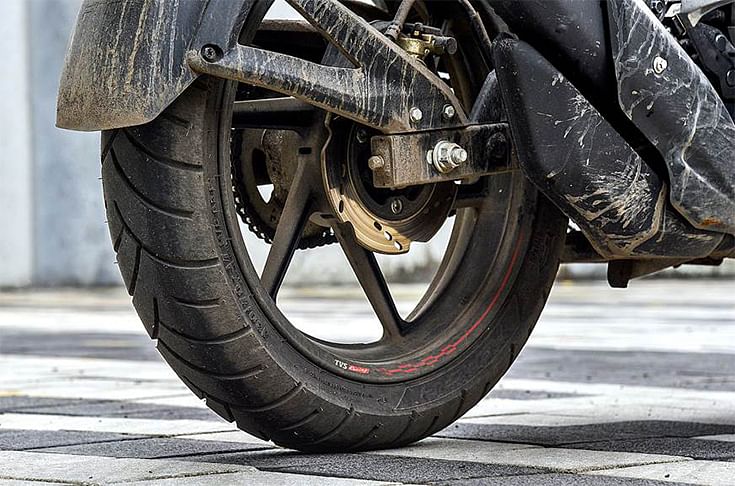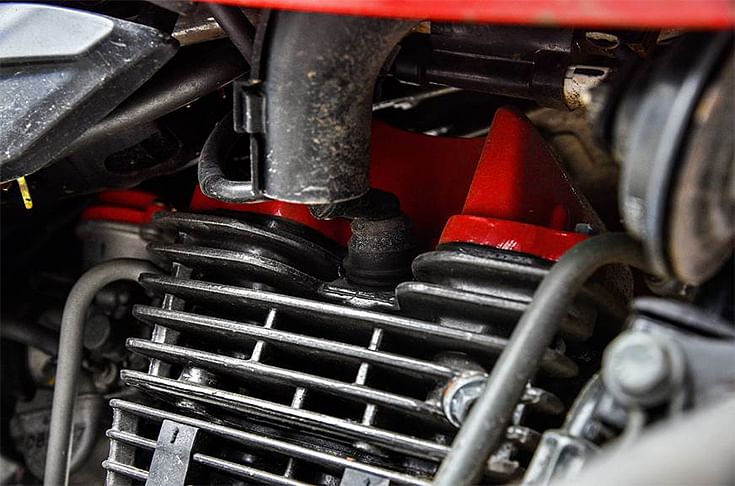Top tips for riding in the monsoon
A handy guide on the essential care regimen for your bike during the monsoon.
With the lockdown norms easing across the country, people are slowly resuming normal activity. Soon they will start getting back to work and commuting on a motorcycle. This also coincides with monsoon in most part of the country.
While riding in the rain isn’t up everyone’s alley, monsoon isn’t a time to stow away your motorcycle – instead, you can use it to enhance your skills! However, this doesn’t mean you can jump into monsoon riding without any sort of preparation. Here are a few tips for yourself and your motorcycle that will help make riding in the wet a bit easier.
Before your ride
For many this will be the first time they are taking out their motorcycles after the lockdown was imposed. So it's a good idea to get a service/check-up done before you start riding.

If your bike has any mechanical issues that mildly hamper riding in the dry, they're only going to get amplified when riding in the rain.
- Tyre condition: Check the condition of your tyres. If they're near the end of their life, it's best to just replace them, even if you believe they've got a few hundred kilometres of rubber left. Tyre tread is designed to disperse water, so having good tread depth is critical for riding in the wet. Of course, just having good tread depth doesn't ensure good grip in the wet. If the tyres are too old, chances are that the rubber has gone hard, and hardened tyres will end up being nearly as bad as bald ones in the wet.
- Tyre pressure: It's generally a good idea to run tyre pressures one or two psi below the manufacturer's recommendation in the rains. The increased contact patch gives slightly improved grip on wet roads. Just make sure that you don't drop the pressure too much as that has an inverse effect on grip. Also, don’t forget to return to specified tyre pressure during a dry spell.
- Waterproofing: Get yourself some waterproof gear or some rain gear that fits over your riding gear. Your rainwear needs to be loose enough so that it doesn't hamper movement on the bike, yet snug enough that it doesn't flap about or snag on any part. This becomes especially critical on rain pants. The more comfortable you are on the bike (read: dry and warm), the easier you'll find riding in tricky conditions.
- Get booted: Boots are often the most ignored part of riding in the rains. Invest in a good pair of waterproof boots. You'll find that dry feet go a long way in keeping you comfortable on the bike.
- Lighten up: While you might prefer darker colours, it might be a good idea to invest in some brightly coloured rain gear as it makes you more visible in rainy conditions. If it’s still not your cup of tea, at least ensure your gear has enough reflective strips, which will enhance your visibility at night.
- Visibility: Generally avoid using dark or tinted visors on your helmet in the rains. Clear visors give you much better visibility in gloomy monsoon conditions. Also, make sure the visor is clean and scratch-free before you start riding. Avoid using any substances like wax in an effort to make the visor repel water, as this can damage the visor and hamper visibility. If you think your visor is scratched, especially in your line of sight, just replace it.
- Maintenance: It's a good idea to carry a clean and dry microfibre cloth with you to clean your helmet visor if it gets wet or muddy. If it's muddy, pour some water on it to clear the mud before wiping with a cloth, as not doing so may scratch your visor.
On the bike
- Better control: Wet roads means your tyres have less traction, so avoid any sudden actions on the motorcycle, such as rapidly opening the throttle, applying the brakes really hard or steering the bike aggressively. Such sudden movements can very easily overwhelm traction available to your tyres, possibly causing you to crash. Be smooth and progressive with your inputs.
- Right techniques: Proper braking techniques become all the more critical in wet conditions. While a bike with ABS will let you slam the brakes hard on wet roads safely, if your bike doesn't have ABS, you have to be extra careful. Again, it's important to be progressive with your inputs. Learn to feel what the tyres are doing when you apply the brakes. The moment you sense the tyres about to lock, ease the pressure on the brakes a little. When riding in the dry, we primarily rely on the front brakes to provide most of the required braking force. However, in the wet, it's best to use both front and rear brakes simultaneously, so as to not overwhelm any one tyre under braking.
- Kill speeds: One needs to be extra careful when riding during the first rains of the season, as these tend to leech out the oils and grime from the road surface, making it extra slippery. Keeping a lower speed than normal in such conditions is recommended.
- Unsafe lines: Road markings such as lane separators, zebra crossings, and even manhole covers tend to be extra slippery when wet. Avoid riding over them as far as possible.
- Keep distance when wet: Maintain more distance from vehicles ahead of you than you normally would. This gives you extra room to slow down, as your bike needs longer distances to brake safely in the wet. Plus, it helps you to avoid the spray of mud from these vehicles' rear tyres.
- Headlights on: Ride with your headlight on (not just your parking lamps), even if it's just an overcast day. The gloomy conditions in the monsoons reduce contrast, so running your headlights helps to make you more visible to other road users.
- No splashes please: While it might be fun to splash through a puddle, avoid it as much as possible. If the puddle is deep, the sudden slowing down your bike experiences might make you lose control. Plus, you never know if there's a deep pothole lurking under all that standing water. If riding through standing water is unavoidable, then it's best to keep a slower speed, a lower gear, and ride with a consistent throttle. This will help avoid a big splash that might just allow water to creep into either your spark plugs or exhaust. It’s also an act of kindness towards fellow road users/pedestrians, who may not enjoy water splashes as much as you do.
In the corners
- No sudden movements: Make sure you don't make any sudden movements on the bike and things should be just fine. Your brake, throttle and steering inputs have to be as smooth as possible to maintain optimal traction.
- Optimise grip: You are not going to be able to carry the same lean angles in the wet as you do in the dry – no, even your favourite MotoGP rider can’t – so choose lines and speeds through corners which will allow you to keep your bike more upright, ensuring you have more grip in the turns.
- Avoid trail-braking: Yes, even if your bike has ABS. Suddenly slowing down when your bike is leaned over on a wet road can cause the front end to tuck in and can result in a crash. As far as possible, scrub off your speed in a straight line before pitching your motorcycle into the turn.
- Go slow: In the end, it's best to ride slower and less aggressively than you usually do. It's better to ride a little slower, but more often in the rain, rather than crashing or scaring yourself into not riding in the monsoons. As a wise man said, "If you don't ride in the rain, you don't ride!"
After the ride

Don't forget these tips even after you reach your destination. They will go a long way in maintaining and expanding the life-cycle of your bike in the years to come.
- Clean-up: During the monsoons, it's a good idea to get your bike pressure washed more often than you would during other seasons. Mud that gets sprayed into your bike can damage components over time. Washing all the little nooks and crannies of your bike regularly will ensure a longer life for all its components.
- Chain care: These days, a lot of bikes come with exposed chains, and these chains need more attention during monsoons. When you wash your bike, pay particular attention to the chain, and lube it generously once washed and dried. This will improve the longevity of the chain, and will allow your bike to run smooth for a long time.
RELATED ARTICLES
Why Toyota Is Building Its Carbon-Neutral Future Around India
A look inside the engineering logic driving the world’s largest carmaker as it pursues multiple routes to decarbonisatio...
ZF’s Construction Equipment Strategy Reveals How India Has Moved Beyond the Auto Market
ZF's leadership sees the construction equipment sector as an anomaly, a segment that, despite its current sluggishness, ...
India Breaks Into Exclusive Auto Export League With Over 5 Million Units Shipped
From a tentative, low-cost production centre, India has emerged as a reliable manufacturing destination for automobiles ...






 20 Jun 2020
20 Jun 2020
 17637 Views
17637 Views





 Ketan Thakkar
Ketan Thakkar


 Shahkar Abidi
Shahkar Abidi


